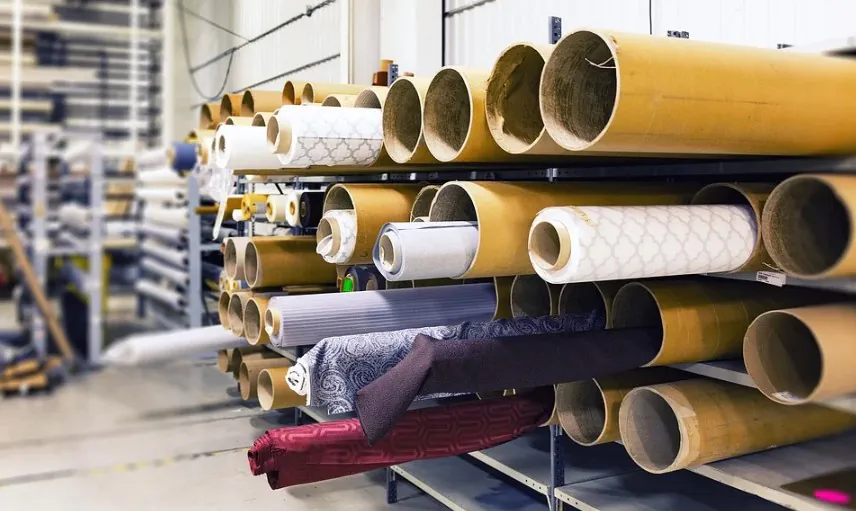The global textile industry growth continues to be driven by the world’s largest textile producing countries and the top textile exporters in 2020, mainly owning to their rising production and sales of materials such as cotton, yarn, fiber and other finished products or apparels. While China remains world’s largest textile producers and exporters, other major textile markets such as EU, India and the US, are also showing an impressive annual growth rate over the last few years. It is expected that the global textile industry will grow proportionally with the fast-changing fashion market around the world, meaning that the world’s largest textile producing countries and top textile exporters are still full of opportunities to flourish further over the near future.
This industry fact sheet is to assist industry professionals, investors, and people in general that are interested in gaining insights into the global textile industry including:
· How much is the global textile industry worth?
· Which country is the largest producer of textiles?
· Who are the top textile manufacturing companies?
· What are the top exporters for textiles?
· What are the future trends of global textile industry?
Bizvibe’s smart B2B marketplace solutions help buyers and suppliers in the global textile and fabric industry to find and connect with each other, shorten sourcing and purchasing cycles, and maximise profit growth. Join today to see how BizVibe can help your business grow!
Global Textile Industry Facts and Figures 2020
- The global textile industry was estimated at around US$920 billion in 2018, and it is projected to reach approximately US$1,230 billion by 2024, representing a steady CAGR of nearly 5% during the forecast period.
- On the basis of raw material, cotton dominated the textile market with a value of USD 378.6 billion in 2019 owing to its properties such as high absorbency and strength.
- In terms of volume, polyester accounted for a share of 28.0% in 2019 and is expected to register a significant growth rate over the forecast period owing to properties such as excellent shrink resistance and high strength.
- Fashion and clothing emerged as the largest application segment with a value of USD 712.3 billion in 2019 owing to the rapid rise in consumer spending on apparels and clothing.
- China is currently the world’s largest textile producer and exporter of both raw textiles and garments, accounting for over half of the global textile output every year. The United States is the leading producer and exporter of raw cotton, while also being the top importer of raw textiles and garments.
- India is another one of the world’s largest textile producing countries and largest textile exporters. It holds an export value of more than US$30 billion a year. India is responsible for more than 6.9% of the world’s total textile production and its textile industry valued at approximately US$ 150 billion.
- The rising application of smart textile products owing to the miniaturization of electronic components and the use of conductive materials is expected to drive the product demand.
- Technological innovation in terms of the development of new upholstery products derived from coated fabrics and spider silk is expected to open new market opportunities in the near future.
Source: Mordor Intelligence, Grand View Research
Top 10 Largest Textile Producing Countries 2020
| Rank | Country | 2019 Textile Output in the Global Share |
| 1 | China | 52.2% |
| 2 | India | 6.9% |
| 3 | United States | 5.3% |
| 4 | Pakistan | 3.6% |
| 5 | Brazil | 2.4% |
| 6 | Indonesia | 2.4% |
| 7 | Turkey | 1.9% |
| 8 | South Korea | 1.8% |
| 9 | Thailand | 1.1% |
| 10 | Mexico | 0.9% |
China is the largest textile producer in the world. With its rapid growth over the last two decades, the Chinese textile industry has become one of the main pillars of the country’s economy. Low cost and vast labor availability, reduced commercial barriers and strong material supply are a few of the competitive advantages the country offers for the textile manufacturing industry. In regard to material supply, China produced around 79 billion meters of cloth in 2017 alone, and 5.99 million metric tons of cotton in 2017/2018.
Some of the largest textile manufacturing companies in China include: Jiangsu Hengli Group, Shangtex Holding Co Ltd, Lu Thai Textile Co Ltd, and Huafu Top Dyed Melange Yarn Co Ltd.
India is the second largest textile producer in the world in terms of production volume. The Indian textiles industry, currently estimated at around US$ 150 billion, is expected to reach US$ 250 billion by 2019. According the latest report from IBEF, India’s textiles industry contributed seven per cent of the industry output (in value terms) of India in 2018-19. It contributed two per cent to the GDP of India and employs more than 45 million people in 2018-19. The sector contributed 15 per cent to the export earnings of India in 2018-19.
Some of the largest textile manufacturing companies in India include: Arvind Ltd, Vardhman Textiles Ltd, Welspun India Ltd, Raymond Ltd and Trident Ltd
The US ranked on the third place in the list of world’s largest textile producing countries. According to the recent report from the US National Council of Textile Organizations (NCTO), the total value of U.S. man-made fiber and filament, textile, and apparel shipments totaled an estimated $76.8 billion in 2018, this is an uptick from the $73 billion in output in 2017. Thanks to its productivity, flexibility and innovation, the US continues to be one of the top largest textile producers in the world.
Some of the largest textile manufacturing companies in the US include: TJX Companies, VF Corporation, L Brands Inc, Abercrombie & Fitch Co.
Over the recent years, many other developing countries are also gaining immense growth in their textile industries as their investment into the textile or garment industry increases. Countries such as Pakistan, Indonesia, Thailand and Sri Lanka, as well as a number of South American countries have also seen considerable growth in their textile output in recent years. As China moves towards a service-based economy, and labor prices continue to rise, it is expected that more and more international buyers and investors will shift their business focus to these fast-evolving markets in the near future.
Top 10 Textile Exporters in the World
| Rank | Country/Region | 2018 Export Value ($ billion) |
| 1 | China | 118.5 |
| 2 | EU | 74 |
| 3 | India | 18.1 |
| 4 | US | 13.8 |
| 5 | Turkey | 11.9 |
| 6 | South Korea | 9.8 |
| 7 | Taiwan | 9.2 |
| 8 | Vietnam | 8.3 |
| 9 | Pakistan | 8.0 |
| 10 | Hong Kong | 7.4 |
Source: WTO
In 2018, China’s textile exports were valued at approximately US$119 billion, accounting for over 37.6% of global market share, making it the largest textile exporting country in the world. Clothes, clothing accessories, textile yarns and textile have long been some of the most exported goods in China, contributing hugely to the nation’s economy growth over the decades.
The European Union was the second largest textile exporter region in the world with an export value of $74 and 23.5% of the global market share. Italy, Germany, Spain, and France were some of the top largest textile producing countries and largest textile exporters in the region. There were over 170 thousand textile and clothing companies in the EU; about 70 percent of them are clothing companies, 30 percent are textile companies.
India is also amongst the top textile exporters in the world; with exports of over $18 billion in 2018. IBEF reports that India’s textile and apparel exports stood at US$ 38.70 billion in FY19 and is expected to increase to US$ 82.00 billion by 2021 from US$ 11.92 billion in FY20.
Future Trends of the Global Textile Industry
One of the major global textile industry trends that has been witnessed is the rising demand for non-woven fabrics, mainly driven by the downstream industries such as personal care, packaging, automotive and constructions sectors. Non-woven fabrics are some of the materials for producing hygiene and personal care products, such as baby diapers, sanitary napkins and adult incontinence; In construction industry, non-wovens are used in road building in the form of geotextiles to increase the durability of roads; the automobile industry also manufactures a large number of exterior and interior parts using non-woven fabrics. With the rising demand caused by the extensive applications in the downstream industries, the non-woven segment is expected to witness a faster growth rate among the global textile industry over the next few years.



